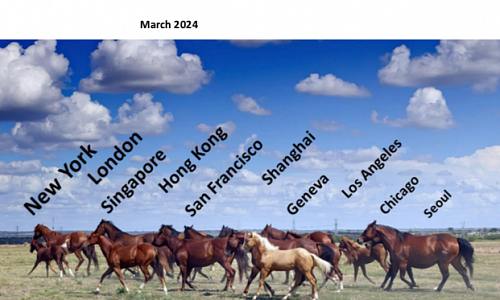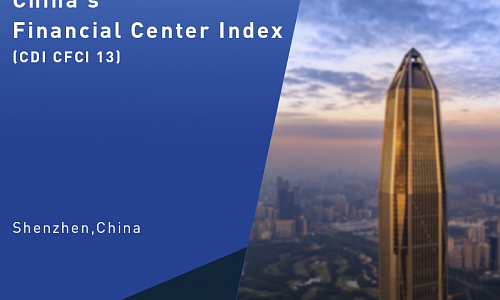Fu Yongjia

Research Fellow
Research Focus
International Relations, Institutional Framework of SEZs, and Industry Studies
Education
PhD in Religious Studies, King’s College London
MSc in Strategic Studies, Nanyang Technological University
MA in International Relations, the University of Warwick
MSc in Applied Linguistics, the University of Edinburgh
Projects
Study on market mechanism of ecological and environmental management in the pilot demonstration area of socialism with Chinese characteristics, 2021
Report on the development of border economic cooperation zone and cross-border economic cooperation zone , 2021
Study on deepening Qianhai-Shenzhen-Hong Kong cooperation strategy, 2021
The 14th five-year plan for the development of professional service industry in Qianhai Shenzhen, 2021
Study on the development strategy of Dongguan's open economy, 2021
Compilation of detailed regulatory planning for Jilong border economic cooperation zone in Tibet, 2021
Comparative Study on Construction of Suzhou and Shenzhen Development Zones, 2020
Study on Industry and Investment Cooperation Between China and Chile, 2020
Study on Tashkurgan Border Economic Cooperation Zone in Xinjiang, 2020
Contact
E-mail: fu.yongjia@cdi.org.cn
Feng Caicai

Research Assistant
Research Focus
Blue Economy, Regional Economics, Industrial Planning, and Industrial Park
Education
Master of Management, China University of Mining and Technology
Projects
International Comparative Study of Shenzhen's Construction of a Global Marine City, 2018
Implementation Plan of Development of Guangxi Beibu Gulf Economic Zone in Alignment with Greater Bay Area, 2018
Study on Collaborative Development and Innovation Model of Science and Technology for Dongguan, Hong Kong and Macao, 2018
Plan of Building Anyang into a Regional Central City in the New Era, 2018
Dongguan Binhaiwan New Zone Development Master Plan, 2018
Formulation of Three-Year Action Plan for Guangdong's Marine Industry, 2018
Guangdong Future Industry (Gas Hydrate) Development Plan, 2018
Implementation Plan and Progress Evaluation for Shenzhen Innovative Marine Economic Development, 2018
Study on Development and Policy of Gas Hydrate Industry of Shenzhen, 2018
Study on Promoting High-quality Development of Huizhou Marine Economy, 2018
Formulation of Integrated Implementation Plan for Shenzhen Marine Emerging Industrial Base, 2018
Report on Future Development of Ocean Industry in Shenzhen, 2016
Survey on Marine Economy of Seven Non-Coastal Cities of First National Survey on Marine Economy in Guangdong Province, 2016
Development Planning of Marine Special Industrial Park in Shenzhen, 2016
Industrial Plan of Urban Renewal and Investment Attraction for Shenzhen Bus Station Area, 2016
Industrial Plan of Urban Renewal Program of Shijing in Pingshan District, Shenzhen, 2016
Contact
E-mail: fcc@cdi.org.cn
Tel: +86-755-8247 0302
Ding Chengwei

Research Assistant
Research Focus
Blue Economy, Public Governance, Innovation-Driven Growth, Regional Economics
Education
Master of Natural Science; Xiamen University
Projects
International Comparative Study of Shenzhen's Construction of a Global Marine City, 2018
Three-year Action Plan of Luohu to Implement Construction of Innovation Demonstration Area, 2018
Preliminary Study on Development of Marine Think Tanks in Shenzhen, 2018
Implementation Plan and Progress Evaluation for Shenzhen Innovative Marine Economic Development, 2018
Implementation and Longitudinal Evaluation of Shenzhen Marine Economic Development, 2018
Plan of Fishing Port Economic Transformation and Upgrading of Shenzhen, 2018
Contact
E-mail: dingcw@cdi.org.cn
Tel: +86-755-2512 1415
Chen Zhenhua

Research Associate
Research Focus
Regional Economics, Rural Development, and Industrial Planning
Education
Master of Global Political Economy, The Chinese University of Hong Kong
Projects
China platform economic soundness index report, 2021
Study on accelerating the development of new cultural industry in Shenzhen, 2021
Study on the strategy of jointly promoting Shenzhen-Hong Kong eastern development circle, 2021
Study on innovation and development planning of East Lake Science City Wuhan, 2021
Annual report on ecological and environmental protection of Qinling mountains, 2021
Study on Jiangmen's comprehensive strategic alignment with Shenzhen, 2021
Industrial planning for urban renewal unit in Shangwei area in Longgang district Shenzhen, 2021
Study on performance management and salary incentive scheme of Shenzhen Longgang District Investment Holding Group Co., Ltd., 2021
Study on Planning and Development of E-commerce in Yunnan, 2020
Digital Commerce Development Plan of Yunnan during the 14th Five-Year Plan Period, 2020
Study on 40th Anniversary of Shenzhen Special Economic Zone, 2020
Study on Shenzhen's Strategies under the Trend of Global Industrial Chain and Supply Chain Adjustment, 2020
Study on Long-term Regulation Mechanism of Shantou’s Real Estate Market, 2020
Implementation Scheme of Guangdong-Hong Kong-Macao Greater Bay Area Air Cargo Customs Clearance Innovation Base, 2020
Development Strategy and Planning of Baguang Development, Construction, Operation and Management Co., Ltd. in Dapeng New District Shenzhen, 2020
Strategic Development Plan of Shenzhen Dashahe Construction Investment Co., Ltd. during the 14th Five-Year Plan Period, 2020
Development Plan of Luohu Port Economic Belt in Shenzhen, 2019
Report on Relocation of Industrial Enterprises in Shenzhen, 2019
Study on Promoting Industrial Transformation and Upgrading of Luohu District Shenzhen, 2019
Evaluation of Shenzhen's Reform Initiative to Cultivate Market Players in Environmental Governance and Ecological Protection, 2019
Study on State-Owned Enterprises Reform in Longgang District Shenzhen, 2019
Study on Restoring Aviation Function of Shenzhen Airport Terminal A/B, 2019
Contact
E-mail: chenzh@cdi.org.cn
Tel:+86-755-8247 1598
Cai Bingjie

Research Associate
Research Focus
Guangdong-Hong Kong-Macao Greater Bay Area, Regional Economics, Urban Development, Industrial Planning, Blue Economy
Education
Master of Natural Science; Southwest University
Projects
International Comparative Study of Shenzhen's Construction of a Global Marine City, 2018
Study on Collaborative Development and Innovation Model of Science and Technology for Dongguan, Hong Kong and Macao, 2018
Dongguan Binhaiwan New Zone Development Master Plan, 2018
Plan of Fishing Port Economic Transformation and Upgrading of Shenzhen, 2018
Special Plan of Ecological and Environmental Protection of Binhaiwan New Zone Dongguan, 2018
Plan of Building Anyang into a Regional Central City in the New Era, 2018
Contact
Email: caibj@cdi.org.cn
Tel: +86-755-2512 4161
Global Opportunities from the Urbanization of 1.4 Billion Chinese

Author: Fan Gang, President of CDI
Editor’s Note: China’s central government has made important adjustments to the urbanization strategy, shifting from the strategy to develop small towns to developing large cities. Crucial to building big cities and large city clusters is the integration of transport and public services.
In the past 40 years of reform and opening up, China has experienced the largest and fastest industrialization and urbanization process in world history. At present, only about 55% of Chinese live in cities, and the process of urbanization is far from over. Recently, during the China International Import Expo, President Xi Jinping proposed to support the regional integrative development of the Yangtze River Delta as a national strategy. Recently, the Central Committee of the Communist Party of China and the State Council issued the “Opinions on Establishing a New Mechanism for More Effective Regional Coordination and Development”, which mandated the integrative development of major regions driven by the Beijing-Tianjin-Hebei cluster, Yangtze River Delta cluster, Guangdong-Hong Kong-Macao Greater Bay Area and Chengdu-Chongqing cluster. These recent developments signal a strategic shift from encouraging the development of small towns to that of big cities and large city clusters.
China will form a “3+N” city cluster layout.
The polarization of China’s real estate market is in essence a result of increasingly polarized population flow, which will lead to the formation of three super city clusters with a population of 100-200 million, and a number of big city clusters with a population of 30-50 million. The Beijing-Tianjin-Hebei region, the Yangtze River Delta, and the Guangdong-Hong Kong-Macao region have the potential for becoming super city clusters, while Wuhan, Zhengzhou, and the Chengdu-Chongqing region will likely see the emergence of big city clusters.
The development of big cities and large city clusters, in itself a response to people’s pursuit of a better life, conforms to the current dynamics of population movement and will contribute to economy of scale and the agglomeration effect. In this process, it is crucial to have a broad vision, for it would be necessary to draw lessons from the development of other countries and proactively make city plans in line with urbanization trends. The first priority is effective transport system that enables people to work and live in separate zones or cities, thus making it possible for big cities and surrounding small towns to have different functions. This also requires that small cities and towns around big cities have different functions to avoid overlaps.
Promoting regional coordination by drawing on China’s historical experience of “Imperial Commissioners” and “Provincial Governors”
To further promote the construction of large city clusters, it is imperative to solve problems of current administrative divisions for effective overall planning so that economic, industrial and research sectors within the region can complement each other in a coordinated way.
Large-scale regional planning is often hindered by administrative divisions, which requires coordination and guidance at a higher level. Compared with the joint deliberative organs such as the council of New York bay among other bay areas, effective coordination mechanisms in many domestic city clusters are yet to be formed. Measures such as holding annual joint meeting among city mayors so that they can share views on their own cities’ development and explore possible solutions for integrative growth are by no means easy to achieve.
In this respect, we can draw lessons from China’s historical experience: all dynasties in China have official positions such as the “Imperial Commissioner”, “Governor of Two Provinces”, “Governor of Guangdong and Guangxi”, etc., which are responsible for coordinating work in a case-by-case approach.
By far several regional coordination mechanisms have formed in China. The State Council has set up a Beijing-Tianjin-Hebei Collaborative Development Leading Group headed by China’s Vice Premier. The Yangtze River Delta and the Pearl River Delta may also require such an arrangement. Within a cluster, cities shall avoid forming similar industrial structure, but instead, develop a range of industries in different areas as well as different small city layouts to ensure coordination and complementarity.
Public services shall be enhanced for city clusters.
Strengthening the integration of public services is also crucial, including ensuring cross-regional coordination of medical services and equal access to education. It is important to minimize the influence of the household registration system and strive to achieve equal access to public services for permanent residents. This process will entail reform in economy, society and governance and will require the efforts of think tanks, research institutions and associations to jointly facilitate the sound development of urbanization.
Fundamentals Cannot be Ignored in Innovating and Developing the Financial Sector

Author: Fan Gang, President of CDI
Editor’s Note: It is imperative to reexamine fundamental aspects as we innovate the financial sector in order to ensure a bright prospect for its future development and to actually solve current problems.
The further development of China’s financial sector is unstoppable and is also something determined by China’s economic trends. Still, problems such as high leverage, risks and debts remain, which needs further investigation and analysis. Banks are constantly upgrading the technologies they use, such as APPs, networks, the internet, Fintech and big data, which are only natural as new technologies should be embraced by all industries. But the reason why the above-mentioned problems persist or are even worsening, especially regarding debts and the stock market, even as we try to innovate the financial sector, in my opinion is due to weak fundamentals. These fundamentals should be reexamined in the innovation process. As a late-mover, China wants to catch up with and even overtake advanced countries, but tends to only focus on the attractive side of finance but ignore its underlying rationale and past lessons of development. Thus it is important to consider how the financial sector should be developed by revisiting the fundamentals; this is the only way to effectively address the current problems to ensure robust prospect for the financial sector in future.
- Common sense
Money can be generated through investment but can never come out of thin air. The Ponzi scheme and any other financial practices that promise sustained high returns on investment are all frauds. Another common sense is about financial market regulation, especially for public finance. Regulation encourages innovation, provides confidence that risks can be controlled, and thus facilitates the development of new technologies and sound development in general.
- Fundamental integrity
Fundamental integrity refers to basic systems including legislation that punish and take preventive measures against dishonest behaviors. The essence of finance is credit, without which its development will go awry.
Mergers and acquisitions are a notable example. One main mission of finance is to ensure the survival of the fitter enterprises in the economic cycle, as less competitive enterprises are acquired by more competitive ones, so that their productivity can be more effectively used. But endless back-door deals following mergers and acquisitions render projects not operable. It is necessary to establish a credit system, otherwise the market will always face insurmountable challenges. Take for instance block chain, which is designed to make information transmission smoother and ensure privacy, therefore a means to reduce cost of enterprises and individuals in economic terms, including cost to expose false information or overcome information asymmetry. But the essence of block chain is providing information. If it contains false information, or in other words, if fundamental integrity is undermined, then information technology will only bring us disaster rather than progress. This means we should first address the basic issue of integrity.
- Fundamental nature
Finance, which provides money to users by acting as an intermediary based on credit, is in nature a service industry that accommodates the needs of the real economy. Through banks, securities, funds, insurances and financial management, the financial sector channels capital into the real economy to fuel its growth. Starting from investing in funds to developing the capital market is one way to develop the real economy.
4 Fundamental business forms
One important cause for lack of innovation in investment funds is not with finance, but with the property rights system. This goes back to the basic institutional issues, again that of property rights, not finance.
First, personal intellectual property rights can be capitalized and turned into stock rights to attract venture capital and concentrate capital and resources in the fields of scientific and technological innovation. The absence of corresponding systems has resulted in limited investment in new enterprises. Enterprises think that financing is to borrow money from banks, which is both costly and difficult. If funds are robust, enterprises would naturally be invested in by funds. Banks only provide liquidity for enterprises, while investment funds underpin their long-term development.
Secondly, many basic business forms have not been developed, such as financial intermediaries for mergers, acquisitions and reorganizations. This is also one fundamental issue that should be reexamined.
- Fundamental systems
The innovation of the financial sector and its further development depend on a robust fundamental system. Once they find advanced technologies, less developed countries tend to mistakenly focus only those latest technologies while ignoring the systems behind.
It is important to cement fundamental aspects as we embrace new technologies. As a result of the lack of a well-functioning fundamental system, coupled with the absence of fundamental common sense and corresponding means of regulation, new problems and frauds will emerge following the use of new technologies. This does not mean that innovation is bad, but that great importance shall be given to fundamentals in the process of innovation. Only in this way can the whole financial sector develop in a more sound and balanced way to better contribute to China’s economic development, the generation of wealth, and more efficient operations of capital and investment.
2018 International Trade Forum: Seeking China’s New Growth Momentum
 On December 11, the 2018 International Trade Forum was held in Shenzhen by China Development Institute in collaboration with Shenzhen Association of Enterprises with Foreign Investment among other institutions, where economists, entrepreneurs and government representatives held discussions on the international economic landscape, as well as opportunities and challenges for businesses amidst rising global trade tensions.
On December 11, the 2018 International Trade Forum was held in Shenzhen by China Development Institute in collaboration with Shenzhen Association of Enterprises with Foreign Investment among other institutions, where economists, entrepreneurs and government representatives held discussions on the international economic landscape, as well as opportunities and challenges for businesses amidst rising global trade tensions.
“It is important for China to find new growth momentum in reform.”
Recent years have witnessed the rise of “de-globalization”. It is thus imperative for China to develop a new economic growth model driven by increased productivity. Regarding the supply side, China shall prioritize the supply and allocation of labor, and reform its education and professional training sector in order to facilitate growth of higher quality in future. Regarding the demand side, China shall improve income distribution system and foster higher consumption capacity of its people to further fuel economic growth. In addition, China shall also ensure basic public services as well as equal access to these services.
—— Cai Fang, Member of the Standing Committee of the National People’s Congress, Vice-President of the Chinese Academy of Social Sciences and Chairman of the Board of Directors of the National Institute for Global Strategy.
“The mobility of production factors is the key to building a global technology innovation center for the Greater Bay Area.”
Currently, the Guangdong-Hong Kong-Macao Greater Bay Area faces 5 major challenges in the movement of people, i.e., difficulty for professional accreditation and restricted scope of practice, higher individual income tax in China’s mainland compared to that in Hong Kong and Macao, non-portable social security, difficulty in actualizing equal treatment, and lack of supporting facilities. To address these challenges, the institutional arrangements for the movement of people in the Greater Bay Area shall be innovated, such as unilaterally recognizing the professional qualification of Hong Kong and Macao residents, extending the practice of “separate tax schemes for Hong Kong and Macao people” across the Greater Bay Area, exploring effective ways to link the social security systems of Hong Kong, Macao and the mainland, building Hong Kong and Macao Residents Services Center in the Greater Bay Area, piloting equal treatment for Hong Kong and Macao residents in the Greater Bay Area and fully capitalizing on big data to facilitate the movement of people.
—— Guo Wanda, Executive Vice President of China Development Institute.
The important role of multinationals in economic globalization.
To gain an upper hand in global competition, multinationals shall firstly establish global presence to ensure sustained supply and to establish communication with global clients, and secondly, engage in innovative cooperation in diverse dimensions, and provide more effective solutions for clients, and thirdly, ensure good service and quality commitment to win brand recognition, and fourthly, provide diverse products and one-stop services.
—— Huang Yiyun, General Manager of Dupont China Holding Co., Ltd
“Two-way” asset management competence will be a key advantage in international asset management arena in future.
For a long time in the past, China’s investment in overseas assets has been lacking, and vice versa. This imbalance will be overcome with increased mobility of China’s capital market. Domestic and overseas institutions shall explore different avenues of asset management in search of new systemic hedging strategies to improve resilience in investment and reduce fluctuations.
—— Sun Chen, Chief Executive of Harvest Global Investments Limited
Shenzhen shall seize the opportunity of the development of the Guangdong-Hong Kong-Macao Greater Bay Area and make China’s voice heard in international rules.
Under the Belt and Road Initiative, China’s foreign trade and overseas investment have maintained steady growth. China shall stand up to the new problems that have emerged in international arbitration through legislation or judicial interpretation with even more open mindset. On this front, Shenzhen is dedicated to fostering business environment in sync with international rules, such as internationalizing the governance structure, organization and scope of practice of Shenzhen’s arbitration institution, in a bid to create a new pillar for international arbitration.
—— Liu Xiaochun, President of Shenzhen Court of International Arbitration and Director of Shenzhen Arbitration Commission
Shenzhen’s enterprises shall improve their ability to work with international rules
An increasing number of enterprises in Shenzhen have gone global under the Belt and Road Initiative. These enterprises urgently need to familiarize themselves with local legal system, financial environment and cultural customs. Thus it is important to continue to educate enterprises to ensure their compliance with and respect for international rules, as well as their ability to protect their own legitimate rights using these rules.
—— Gao Zhan, Member of the CPPCC Shenzhen Committee, head of Shenzhen Fair Trade Promotion Administration
European enterprises maintain confidence in investing in China as business environment improves in the latter.
In 2017, European businesses have achieved robust financial performance in China, with 66% of respondent businesses reporting year-on-year revenue increase. Meanwhile, the steady improvement of China’s business environment has boosted European investors’ confidence in operating in China. As to the rising challenges posed by increased production cost, Chinese and German businesses shall deepen high-tech talent training cooperation, so as to provide technical support to cope with labor shortage and faster pace of industrialization.
—— Sven-olaf Steinke, General Manager of TüV Rheinland’s electrical service in China
Businesses shall proactively conduct upgrading to cope with the negative impacts of trade frictions.
As China-US trade frictions continue to ferment, global business operations and investment will face uncertainties. Enterprises shall keep a level head and increase R&D investment in big data and other advanced technologies to boost industrial upgrading, reduce cost and improve efficiency, so as to avert the risks posed by trade frictions.
—— Kang Yong, Chief Economist at KPMG China
The Guangdong-Hong Kong-Macao Greater Bay Area has huge potential, and business complementarity and cooperation shall be encouraged.
The economy in the Greater Bay Area has great potential for growth. Different cities and businesses within the Greater Bay Area shall seek effective cooperation based on mutual complementarity. The Federation of Hong Kong Industries will help its member enterprises in their upgrading process, develop new innovative technology platforms, provide businesses with consulting services and match-making opportunities, and facilitate cooperation between experienced industrialists and start-ups.
—— Sun Qilie, Honoary President of Federation of Hong Kong Industries
https://en.cdi.org.cn/component/k2/itemlist/user/352-superuser?start=250#sigProId48c63f73b5
Canadian Parliamentary Delegation Visits CDI

Dr. Guo Wanda, Executive Vice President, briefed the Greater Bay Area in terms of development challenges and working priorities including infrastructure connectivity, industrial clusters, environmental protection, quality life circle and institutional innovation. Both sides had a proactive discussion on integration of the Greater Bay Area.
China and Singapore to Cooperate on Greater Bay Area Opportunities

Dr. Guo Wanda elaborated on background and priorities of the Greater Bay Area and suggested that Singapore deepen cooperation with the Greater Bay Area in areas like scientific innovation, financial opening and environmental protection. Both sides agreed that the Greater Bay Area will bring more opportunities for the bilateral cooperation between China and Singapore.










